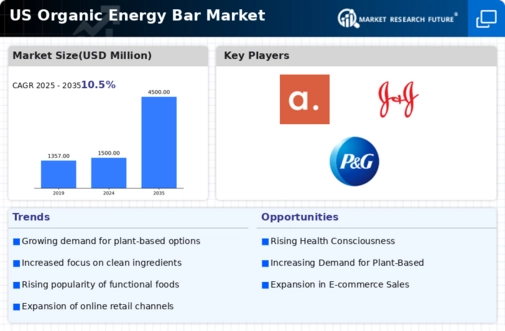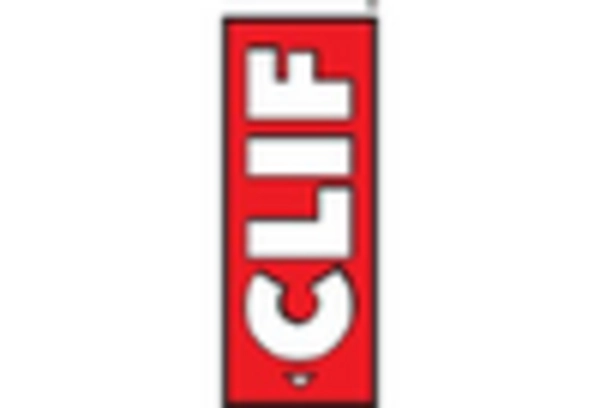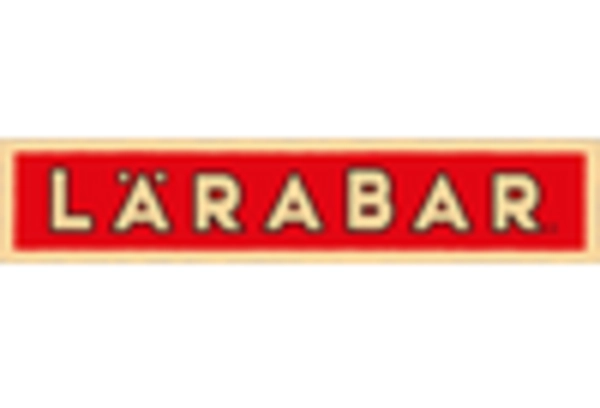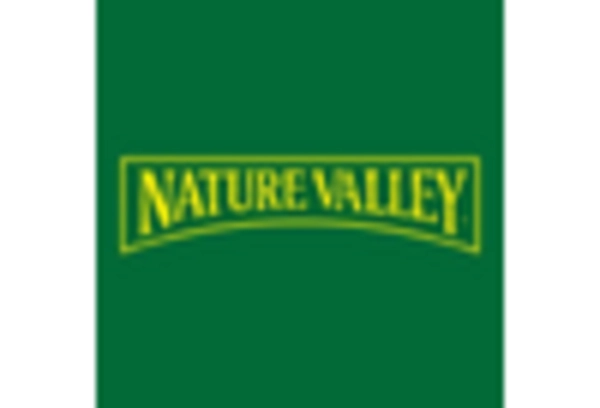The organic energy-bar market is currently characterized by a dynamic competitive landscape, driven by increasing consumer demand for health-conscious snacks and the growing trend towards organic products. Key players such as Clif Bar & Company (US), KIND Snacks (US), and RXBAR (US) are strategically positioned to capitalize on these trends. Clif Bar & Company (US) focuses on innovation in product formulations, emphasizing sustainability in sourcing ingredients, which resonates well with environmentally conscious consumers. Meanwhile, KIND Snacks (US) has adopted a strategy of transparency in labeling and ingredient sourcing, appealing to health-oriented consumers. RXBAR (US) leverages its clean label approach, promoting its bars as simple and nutritious, which has garnered a loyal customer base. Collectively, these strategies enhance their competitive positioning and contribute to a robust market environment.
In terms of business tactics, companies are increasingly localizing manufacturing to reduce supply chain vulnerabilities and optimize logistics. This trend appears to be a response to the need for agility in production and distribution, particularly in a market that is moderately fragmented. The collective influence of these key players shapes a competitive structure where innovation and consumer engagement are paramount, allowing them to differentiate their offerings in a crowded marketplace.
In October 2025, Clif Bar & Company (US) announced a partnership with a leading organic farming cooperative to enhance its supply chain sustainability. This strategic move is likely to bolster its brand image as a leader in environmental responsibility while ensuring a consistent supply of high-quality organic ingredients. Such partnerships may also serve to mitigate risks associated with ingredient sourcing, thereby enhancing operational reliability.
In September 2025, KIND Snacks (US) launched a new line of energy bars specifically designed for athletes, incorporating performance-enhancing ingredients. This initiative not only diversifies their product portfolio but also positions KIND as a serious contender in the sports nutrition segment. By targeting a niche market, KIND may effectively capture a growing demographic of health-conscious athletes, further solidifying its market presence.
In August 2025, RXBAR (US) expanded its distribution channels by entering into a collaboration with a major online grocery platform. This strategic action is indicative of the increasing importance of e-commerce in the organic energy-bar market. By enhancing accessibility to its products, RXBAR is likely to attract a broader consumer base, particularly among younger demographics who prefer online shopping.
As of November 2025, the competitive trends in the organic energy-bar market are increasingly defined by digitalization, sustainability, and the integration of technology into product development. Strategic alliances are becoming more prevalent, as companies seek to leverage each other's strengths to enhance their market positions. Looking ahead, competitive differentiation is expected to evolve, with a notable shift from price-based competition towards innovation, technological advancements, and supply chain reliability. This transition may ultimately redefine how companies engage with consumers, emphasizing quality and sustainability over mere cost.

















Leave a Comment